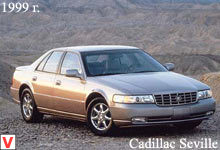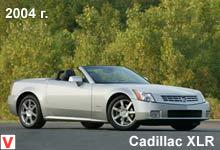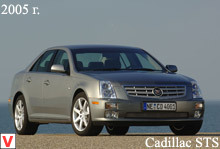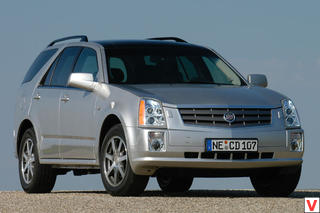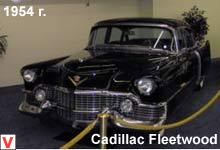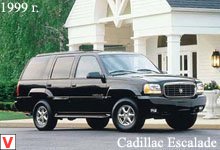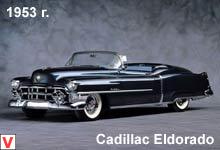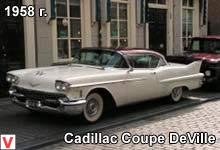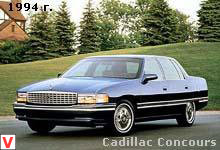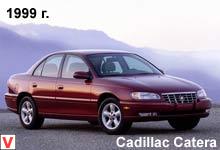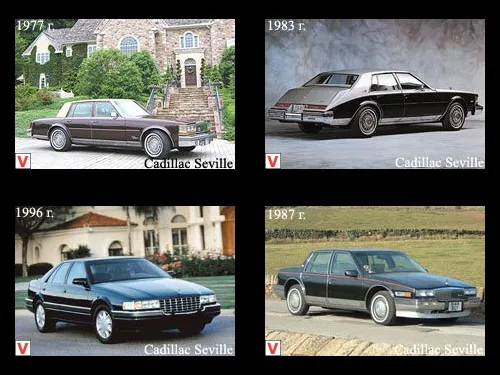
In 1975, a year after the first fuel crisis, the Americans seriously thought about such things as fuel efficiency. Power and dynamics faded into the background. In the model range Cadillac appeared compact model Seville, made in the style of prestigious continental cars. The car was built on the same platform as the Chevrolet Nova (but with serious modifications), and was designed to discourage buyers from prestigious European brands.
In addition to the name and the traditional heraldic coat of arms on the radiator grille, Seville had little in common with the old large Cadillac, but this did not prevent sales, which in the first year of production of the model amounted to more than 43 thousand. . Under the hood is a V-shaped eight-cylinder engine of 5.7 liters with electronic injection. Power reached only 180 horsepower. It was no longer possible - the catalytic converter that had become mandatory since the early 70s interfered - the thing is absolutely incompatible with a high compression ratio and leaded gasoline. Accelerated from 0 to 60 mph (96 km / h) in 10 seconds. The maximum speed of -170 km / h.
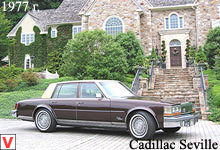
Seville has become an epoch-making model, it has set a new trend in automotive fashion, being the forerunner of the angular American cars of the 1980s. The first generation without any changes were produced before 1979. In 1980, Seville underwent a complete redesign. The updated version was distinguished by sharp edges and spectacular controversial design.
The car received a very unusual body with a small sloping trunk in the spirit of the Razor Edge style (razor blade), which was used on post-war British cars. It is noteworthy that the updated Seville shared the platform with the Eldorado, had front-wheel drive, a fully independent suspension and many other pleasant "little things" that surprised in the early 80s and became the norm in our time. The range of engines consisted of two power units: a diesel volume of 5.7 liters / 105 hp. and petrol V8 with fuel injection volume of 6.0 l / 145 horsepower.
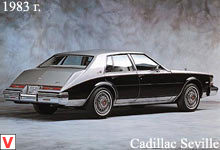
These engines fully comply with the new rigid CAFE law, which came into force at that time and regulated literally everything: from fuel consumption and emissions of harmful substances into the atmosphere to the size of a car. The next update to the Seville model was in 1986. The appearance of the car has changed quite a lot, but it turned out to be completely unremarkable, which is generally characteristic of American models of the late 80s. In order to counter potential buyers, at Seville, 1986-1991, the speed was highlighted on the windshield.
That's just the power of the V-shaped and eight-cylinder engine with a working volume of 4.1 liters was only 130 hp In 1991, the Cadillac Seville received a 4.9-liter / 200 hp engine. In 1992, the world saw the updated Seville and its version of the Seville STS (Seville Touring Sedan). These models have become much larger than their predecessors. They had a beautiful design and were equipped with the newest suspension with variable stiffness shock absorbers, first combined into one set with anti-lock and anti-skid systems and, most importantly, computer-controlled. This generation has earned worldwide recognition.
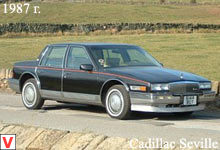
Along with other awards, Seville received the Motor Trend magazine's Car of the Year award. A year later, the model went up one more step, getting the Northstar engine (North Star) with a capacity of 295 horsepower. This power unit V8 had the unique ability to work even with the complete loss of coolant. The electronic control circuit of this engine and automatic transmission ensured optimal values of power, torque and switching points, regardless of driving mode and road conditions. Together with it, the brake control system worked, eliminating locking and wheel slip. All of the above provides drivers with an unsurpassed level of ride quality, handling and reliability.
In 1998, Cadillac introduced a new generation of Seville. The car received a different solution to the front of the body, smooth edges, a modified rear stance, which has become a little thinner. and new door handles with rounded corners. Inside Seville has changed even more.
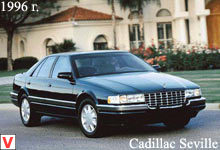
Pleases gas white leather steering wheel with wooden sectors. The instrument panel is completely electronic, although it imitates analog gauges. Below them is a display line to display messages on-board computer. Seat belts are elegantly attached directly to the seats, which have not only powered with memory, but also have 10 small airbags, which allows you to perfectly fit the shape of the seat to the body of the driver or passenger of any complexion. Inside, an incredible number of different drawers, pockets, glove compartments, holders for cups, glasses and small coins. Even in the trunk there are various taynichki for the necessary tools on the road.
The natural evolution of the Northstar system was the introduction of the chassis control system in the 1998 model year, which Cadillac initially referred to as ICCS, but subsequently settled on a more catchy and user-friendly name - StabiliTrak. The system prevents skids when cornering, tracking the angle of the steering wheel and braking the front drive wheels separately.
